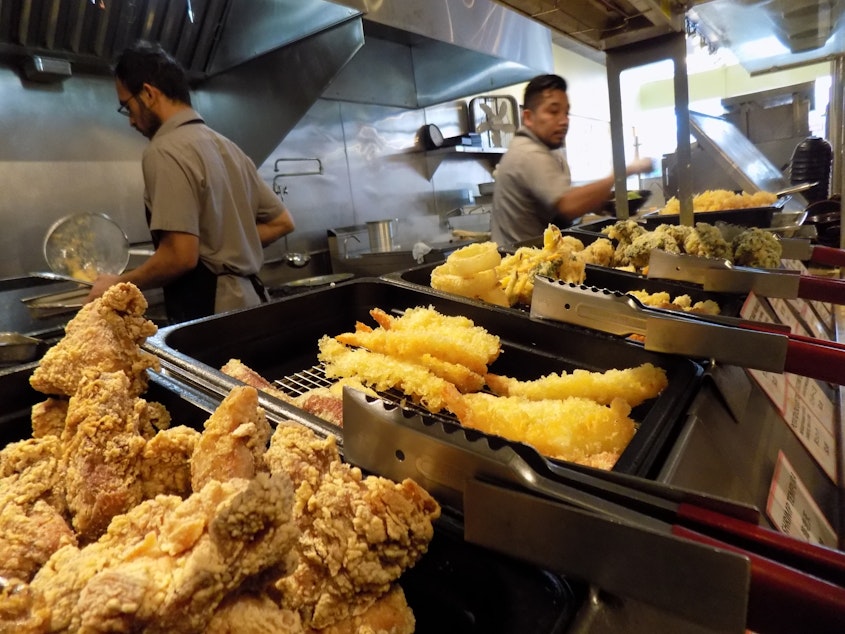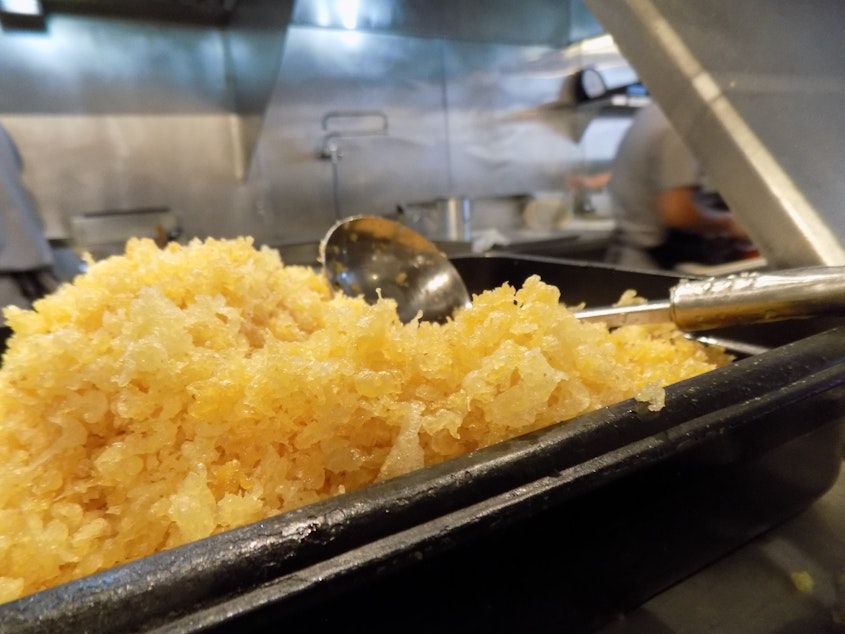Who knew? Tasty tempura has started kitchen fires

This recent article in the New York Times caught our attention: tempura flakes self-combusting, causing kitchen fires in other states.
We wondered if that has ever happened here. We also set out to find out what causes them to ignite.
The noodle shop U:don on Capitol Hill is getting ready for the lunch rush. The main draw is the fresh, thick wheat noodles, often served in a mild broth topped with some meat and vegetable garnish. The meal wouldn’t be complete without some kind of tempura, said owner Tak Kurachi.
“Udon, soba culture in Japan almost always, tempura is served with it,” he said. “It’s like hamburgers and fries, if you have a hamburger, you’ve got to have fries.”
Kurachi said they make at least 20 pounds of tempura at this store each day. Usually vegetables and shrimp are coated in batter and deep fried in oil. Sometimes bits of the batter fall off.
Kurachi saves the crunchy flakes and offers them to customers as additional toppings for their soup.
“It’s like the parmesan cheese to pizza, adding a little bit to your udon noodles adds extra all that fatty taste and crispiness,” he said.
They’re also sprinkled in sushi rolls. Which is why they’re saved at U:don and many Japanese restaurants.
But it has caused some problems. The flakes have started kitchen fires in two Japanese restaurants in Wisconsin. Kurachi said fortunately they’ve not had that problem.

“Throughout my work experience I know that if you pile hot tempura flakes on top of each other … it can be cooking inside. You’ll sift through it and it’ll be smoking and it looks like it’s about to combust,” he said.
Turns out, piling warm tempura flakes in a bowl or container creates the perfect condition for combustion, said Capt. David Powers, fire investigator with the Seattle Fire Department.
“Those types of fires generally begin on the inside because the heat is not allowed to be dissipated,” he explained. “When that heat is not adequately dissipated, then it can build to the point of ignition.”
Powers recommends flakes be spread out, allowing them to cool and prevent from combusting.
If you think kitchen fires are limited to restaurants, they’re not. Powers said kitchen fires are the most common cause of home fires. And they don’t always involve frying; usually the cause is unattended food, and not just the one that’s being cooked.
“People will leave pizza boxes, for example on top of their stove,” said Powers. “We’ve also seen some of things left in the oven, someone comes in and turns it on, doesn’t realize there’s last night’s food left in the oven.”
If you’re cooking with oil or grease, stay nearby. William Mace, the department’s public educator, said keep the area around the stove clean and clear.
“All of our bags, and other foods — keep that away from the stove as well,” he added.
But sometimes mistakes happen, and dinner turns into a fire.
“Safest thing to do is cover your hand with an oven mitt, grab a lid or a cookie sheet, and then slowly slide it over, turn off the stove and leave it there,” Mace said.
He also recommended sliding the lid from the side. That way, you’re not adding oxygen to the fire and it prevents the flame from coming up the sides and potentially burning you. Leave the pan to let it completely cool down.




